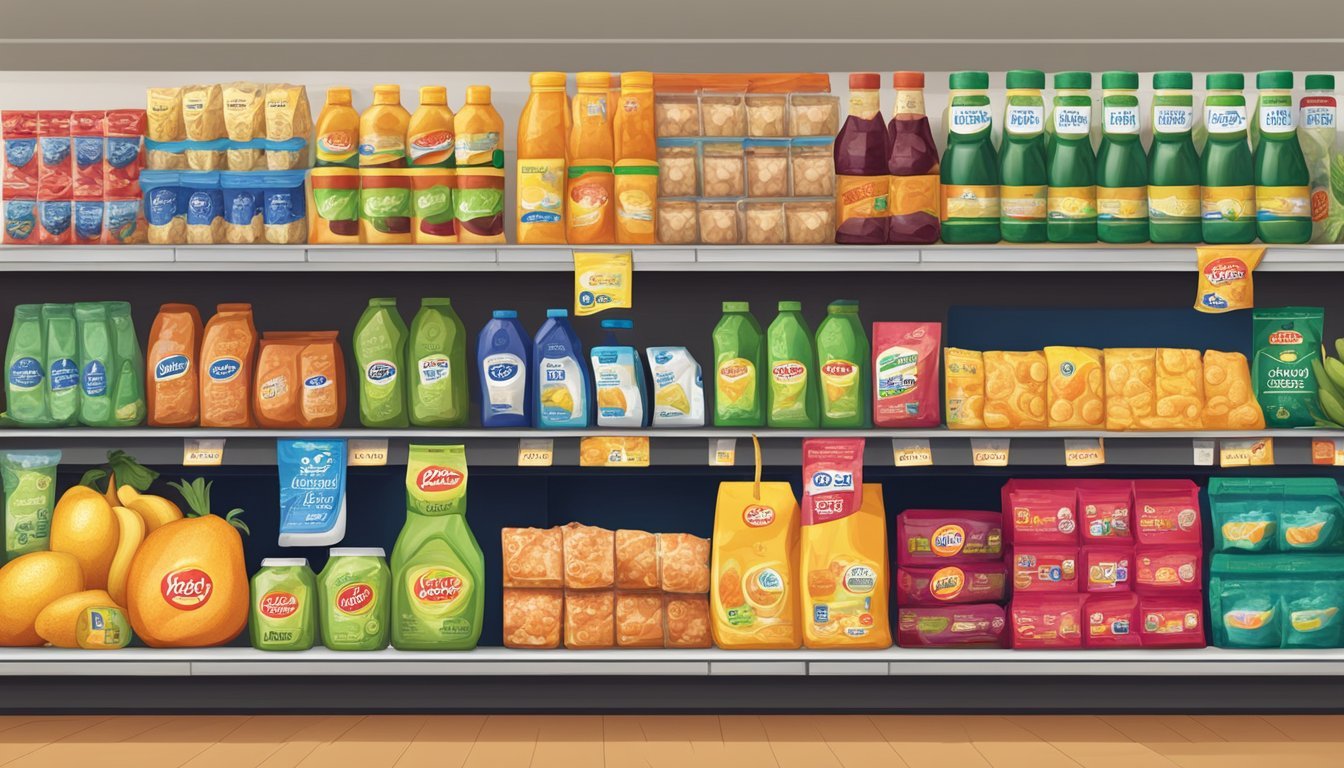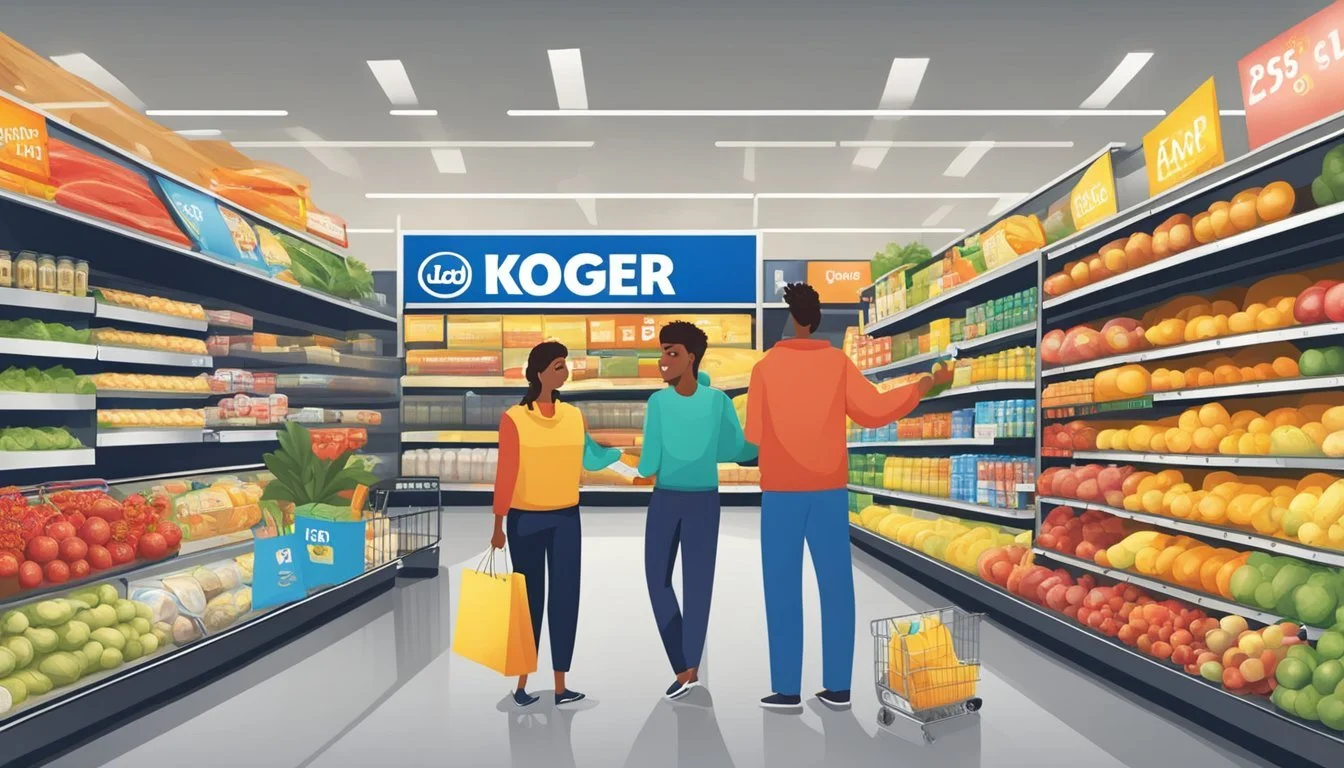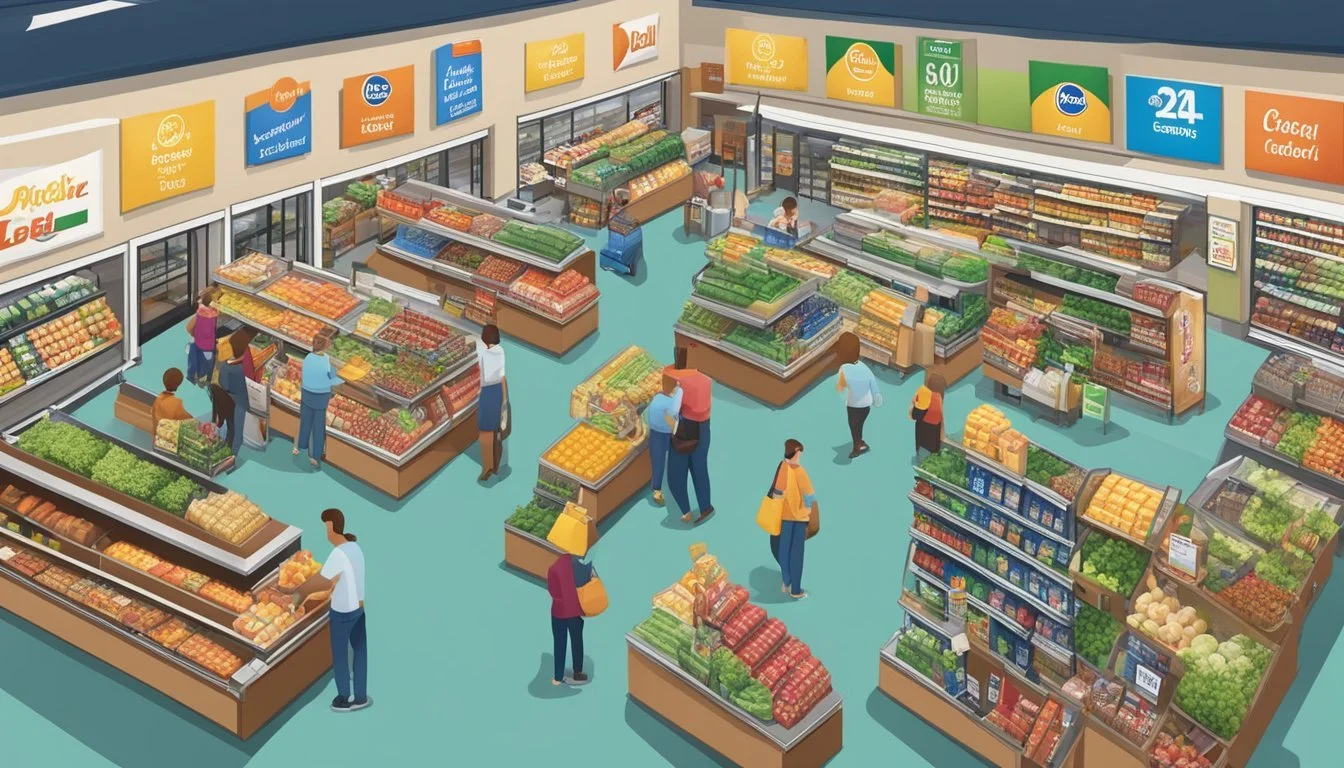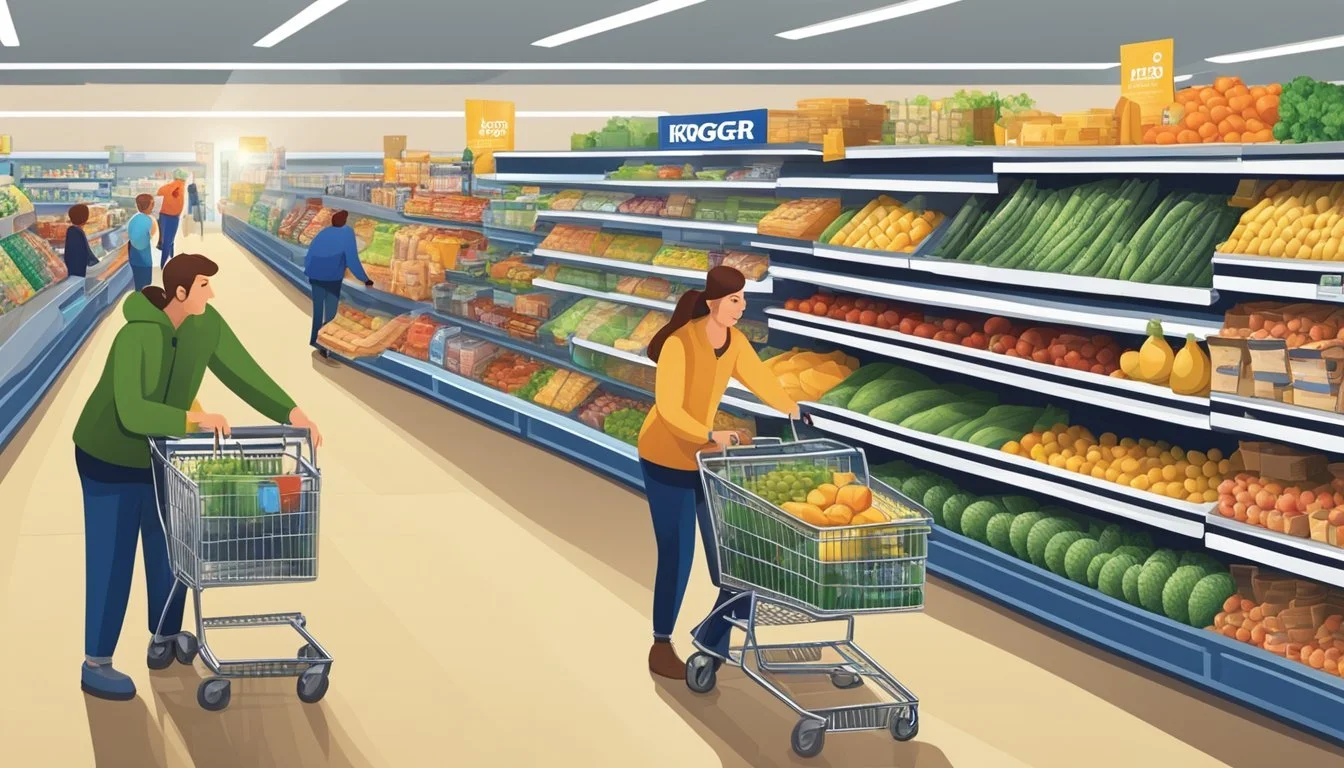Is Kroger Cheaper Than Lidl?
Analyzing Grocery Pricing Trends
Part of Our Grocery Store Guide with Details on Kroger Prices and Lidl Prices
Evaluating grocery prices can yield significant savings for consumers, and the comparison between Kroger and Lidl is especially pertinent due to their strong presence in the market. Data suggests that Kroger often presents a more cost-effective option, with reports showing that in a comparison of 46 items, the total bill at Kroger was approximately 22% less than at Lidl. Such a margin positions Kroger as a favorable choice for shoppers aiming to minimize their grocery expenses.
Shoppers are also directly influenced by the proximity of a Lidl store, as studies indicate that the presence of this retailer in a market area leads to competitive pricing among local grocery chains. For instance, when Lidl opens nearby, other stores, including Walmart and Kroger, have lowered their prices, demonstrating a responsive pricing strategy to Lidl's entry. Evidence shows that specific categories like dairy products, such as milk, experience significant price reductions in areas where Lidl operates.
Yet, despite Kroger's general tendency to emerge as the cheaper option when compared to Lidl, price isn't the only factor consumers consider when shopping for groceries. Availability, product quality, store locations, and personal shopping preferences play vital roles in shaping consumer decisions. Consequently, while price comparisons reveal a distinct edge for Kroger, the overall best value for a consumer depends on a multifaceted evaluation of their unique shopping needs and priorities.
Market Overview and Competitive Landscape
The U.S. supermarket landscape is characterized by its fierce competition and dynamic pricing strategies, where chains like Kroger and Lidl vie for market dominance alongside other industry giants.
Supermarket Industry in the U.S.
The supermarket industry in the United States is a robust sector, comprising an array of players from grocery chains to discounters. It includes behemoths like Walmart and Target, traditional grocers like Kroger and Publix, as well as affordable alternatives such as Aldi and Lidl. The rise of e-commerce giants such as Amazon, which owns Whole Foods, further intensifies the market competition.
Major Grocery Chain Players
The major players in the U.S. grocery sector include Walmart, the market leader due to its extensive network and competitive pricing. Kroger follows, noted for its large selection of items and loyalty program benefits. Specialized chains like Trader Joe’s offer a curated assortment of products, creating their own niche. Aldi and Lidl are known for their discount pricing models, which shake up the market whenever they enter new territories.
Price-Cutting Trends
Price-cutting is a prevalent trend among grocery chains, especially with the entry of cost-effective stores like Lidl. Studies show that the presence of Lidl can lead to notable price reductions in nearby stores, even in established chains like Kroger and Food Lion. These competitive pricing tactics are pivotal in retaining customer loyalty and market share in an industry where the price is often a determining factor for consumers.
Kroger and Lidl Comparison
As grocery chains compete for market share, Kroger and Lidl present differing value propositions to consumers in the United States. Price comparison studies and expansion strategies set these two chains apart.
Kroger's Market Position
Kroger stands as one of the largest supermarket chains in America, offering a wide range of products and services. In terms of pricing, Kroger is often noted for its competitive prices. A case study indicated that Kroger's prices are approximately 22% lower than Lidl's for a 46-item grocery list. This data underscores Kroger's commitment to affordability. They operate not only under the Kroger brand but also multiple subsidiary banners across the country, providing scalability that can influence their pricing strategies.
Lidl’s Expansion in the U.S.
Lidl, a European supermarket chain, has been making strides in the U.S. market with a focus on the East Coast, especially in states like North Carolina. Their aggressive expansion involves the opening of new Lidl stores, which reportedly exert pressure on local competitors to drop their prices. Despite being a newcomer, Lidl's impact is significant: when a new Lidl store opens, nearby competitors like Aldi, Walmart, and Kroger are prompted to reduce their prices.
Brand Perception and Marketing Strategies
Lidl markets itself as an affordable shopping destination, with a simple store layout and limited product selection that contributes to its low-price image. Kroger, on the other hand, leverages a strategy that includes offering value through regular promotions and customer loyalty programs. Both brands use varied marketing strategies to attract different segments of consumers. Lidl's approach in the U.S. somewhat mimics their European strategy, where they focus on discounts and convenience.
Product Pricing Analysis
In this section, an evaluation of product pricing between Kroger and Lidl will be done by looking at different categories, the impact of private-label brands, and studies on Lidl's entrance into new markets.
Comparing Prices Across Categories
Price comparisons across various grocery categories indicate that Kroger generally offers lower prices than Lidl. For instance, an observed shopping cart with 46 items totaled at $107.75 in Kroger and $138.13 in Lidl. When comparing specific categories like produce and meats, these prices reflect a mix of both regularly priced and sale items, which can significantly impact the final costs to consumers.
Influence of Private-Label Brands on Pricing
Private-label brands significantly affect supermarket pricing. Supermarkets like Kroger and Lidl offer a range of these brands, which typically come at lower prices than national brands. Kroger's private-label brands are an essential factor in their ability to maintain competitive prices and often beat Lidl on the cheapest price for similar quality goods.
Study on Price-Cutting Effect by Lidl
A study by Katrijn Gielens from the University of North Carolina Kenan-Flagler Business School suggests that Lidl's entry into a new market has a price-cutting effect on nearby supermarkets. Prices could drop by up to 50% at Kroger and 9% at Walmart, for example, in response to Lidl's presence. Despite these price fluctuations, Kroger remains amongst the stores with the lowest price impact, indicating a strategic response to new competition.
Shopper Experience and Saving Opportunities
When it comes to the shopper experience and opportunities to save money, customers at supermarkets like Kroger and Lidl have distinct considerations in terms of layout, money-saving strategies, and online options.
In-Store Shopping and Layout Comparisons
Kroger and Lidl offer different in-store experiences with their layouts. Kroger provides a familiar supermarket setting with a wide range of products, including strong selections in the produce and dairy sections. The layout is designed to be customer-friendly, helping shoppers find items easily. In contrast, Lidl uses a more streamlined approach with a smaller store footprint, which can translate to quicker shopping trips but may offer a less extensive selection.
Strategies for Consumers to Save Money
Shoppers can employ various strategies to save money while shopping. At Lidl, customers might find that everyday prices are often competitive. However, Kroger is known for sales and discounts that can lead to significant savings. Leveraging Kroger's gas rewards and digital coupons, which Lidl does not offer, can also contribute to a lower overall shopping bill. Keeping an eye on Kroger's sales flyers and planning purchases around discount periods is a savvy way for shoppers to cut costs.
Online Grocery Shopping Trends
The trend of online grocery shopping is increasing, and both Kroger and Lidl are adapting. Kroger offers an online platform with a variety of options including home delivery, store pickup, and ship to home, catering to the needs of digital customers. This service benefits from Kroger's established presence on platforms like Facebook, further engaging with their customer base. Lidl's online presence is growing, with a focus on in-store deals and an increasing interest in exploring online grocery services. The convenience of managing shopping carts digitally is attracting more customers, who are looking for ways to save time and money.
Analysis of Specific Product Categories
In comparing Kroger and Lidl, it's insightful to examine how each retailer prices items across various product categories. This can provide a clearer picture of where consumers may find better deals.
Fresh Produce and Meat Selection
Kroger offers competitive pricing on fresh produce and meat, with discounts especially evident on store brand items. Lidl, on the other hand, presents an array of affordable fresh options, though specific deals can vary weekly. Customers seeking organic produce may find reasonable prices at both stores, but selection size can be a deciding factor.
Dairy and Frozen Food Offerings
The dairy section, which includes essentials like milk, cheese, and yogurt, tends to feature store brands prominently at both chains. Lidl occasionally undercuts Kroger in pricing, but Kroger's larger variety might cater to a wider audience. In the frozen foods category, both retailers offer value, with Kroger often having more recognizable name brands alongside their own labels.
Dry Goods and Non-Perishable Items
Shoppers looking for dry goods such as bread, pantry staples, canned goods, and condiments can find Kroger's shelf prices to be particularly attractive, plus frequent sales promotions. Lidl's lean inventory model might sometimes result in lower baseline prices for similar items, but with less variety in brands.
Household Essentials Range
When it comes to household essentials, such as diapers and cleaning supplies, Kroger's wider product range includes competitive pricing, particularly under their private label. Lidl offers a more limited selection but strives for affordability, especially within its non-food line, including store brand household goods.
Consumer Behavior and Market Impact
In the competitive grocery market, chains like Kroger and Lidl exert pressure on each other, influencing customer buying habits and quality considerations. This section explores how Lidl's presence affects local grocery competitors, the shifting shopping habits of consumers, and the balance customers seek between cost and quality.
Effects of Lidl on Local Competitors
When Lidl enters a market, local competitors often react by adjusting their pricing strategies. A study has indicated that giants like Kroger and Walmart decrease prices by up to 50% and 9% respectively, to maintain their market share against Lidl's competitive pricing. Smaller chains, such as Harris Teeter, feel a similar impact, underscoring the significant competitive pressure exerted by Lidl's presence.
Shopping Habits and Brand Loyalty
Kroger CEO, Rodney McMullen, has highlighted a divide in consumer behavior, with shoppers increasingly opting for either premium or budget products. This segmentation is creating distinct families of shoppers: those loyal to brands for their perceived quality and those primarily customer-focused on price. As a result, store brands and private labels are gaining traction among cost-conscious customers, leading retailers to capitalize on this shift to retain and attract different customer scores.
Cost Versus Quality Considerations
Consumers have to navigate the trade-off between cost savings and quality. While Lidl is often seen as a budget-friendly option, Kroger has positioned itself to offer a range of products that satisfy a broader spectrum of quality preferences. In response to inflationary trends, customers are increasingly comparing the quality and prices of items purchased, illustrating that competitive pricing alone is not the sole driver of consumer choice in the grocery chain landscape.







